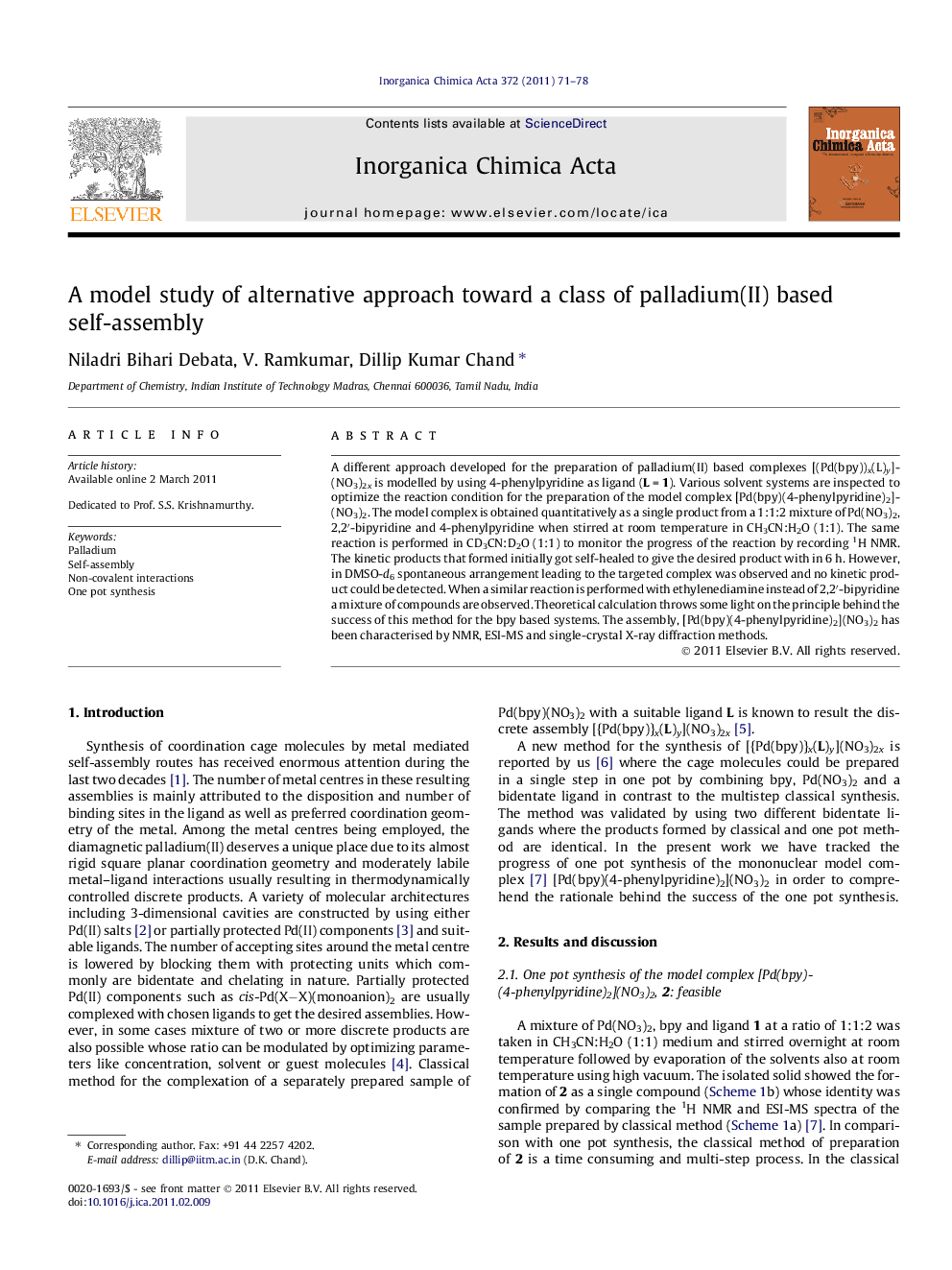| Article ID | Journal | Published Year | Pages | File Type |
|---|---|---|---|---|
| 1308874 | Inorganica Chimica Acta | 2011 | 8 Pages |
A different approach developed for the preparation of palladium(II) based complexes [(Pd(bpy))x(L)y](NO3)2x is modelled by using 4-phenylpyridine as ligand (L = 1). Various solvent systems are inspected to optimize the reaction condition for the preparation of the model complex [Pd(bpy)(4-phenylpyridine)2](NO3)2. The model complex is obtained quantitatively as a single product from a 1:1:2 mixture of Pd(NO3)2, 2,2′-bipyridine and 4-phenylpyridine when stirred at room temperature in CH3CN:H2O (1:1). The same reaction is performed in CD3CN:D2O (1:1) to monitor the progress of the reaction by recording 1H NMR. The kinetic products that formed initially got self-healed to give the desired product with in 6 h. However, in DMSO-d6 spontaneous arrangement leading to the targeted complex was observed and no kinetic product could be detected. When a similar reaction is performed with ethylenediamine instead of 2,2′-bipyridine a mixture of compounds are observed. Theoretical calculation throws some light on the principle behind the success of this method for the bpy based systems. The assembly, [Pd(bpy)(4-phenylpyridine)2](NO3)2 has been characterised by NMR, ESI-MS and single-crystal X-ray diffraction methods.
Graphical abstractThe model complex [(Pd(bpy)(1)2](NO3)2 is obtained quantitatively as a single product from a 1:1:2 mixture of Pd(NO3)2, 2,2′-bipyridine and 4-phenylpyridine (1) when stirred at room temperature in CH3CN:H2O (1:1) or CD3CN:D2O (1:1). NMR investigation indicates formation of kinetic products during initial stage which undergo self-healing to give the desired complex.Figure optionsDownload full-size imageDownload as PowerPoint slideResearch highlights► One step synthesis of [(Pd(bpy)(L)2](NO3)2 in contrast to the classical multistep method. ► NMR investigation suggest initial kinetic products leading to single thermodynamic product. ► Theoretical calculation support the feasibility of the bpy system.
